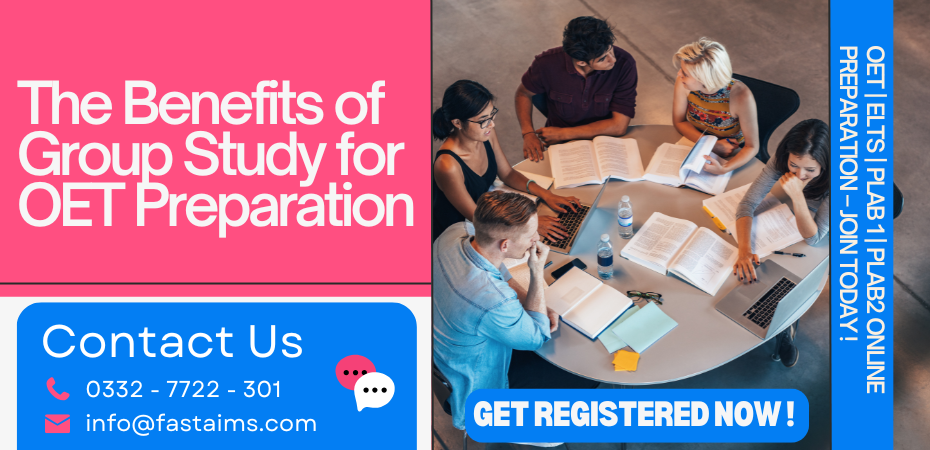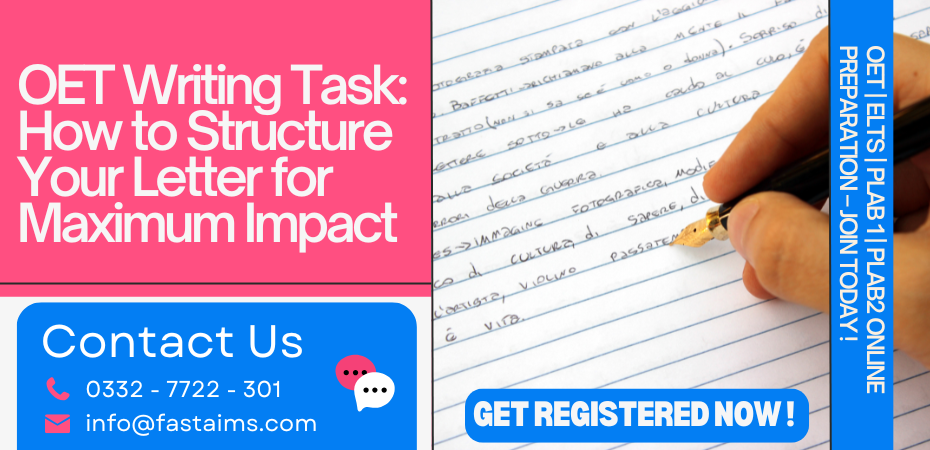The Role of OET in Healthcare Professional Registration Abroad
Introduction
Global Mobility in Healthcare
Healthcare has become increasingly global. Every year, thousands of doctors, nurses, physiotherapists, dentists, and other healthcare professionals migrate to countries like the UK, Australia, Ireland, and the Gulf region in pursuit of better career opportunities and improved living standards. But before they can start treating patients abroad, there’s one crucial hurdle they must clear—language proficiency.
English is the dominant language in many of these healthcare systems. And when you’re communicating patient symptoms, explaining procedures, or collaborating with colleagues, even a small misunderstanding can lead to major consequences. That’s where a reliable, healthcare-specific English assessment becomes necessary.
Global healthcare systems are looking for more than just academic English—they want professionals who can communicate effectively in clinical settings. That’s the exact gap the Occupational English Test (OET) fills. It’s not just an exam; it’s a passport to global healthcare careers.
Why English Proficiency Matters
When you work in a healthcare setting, the stakes are incredibly high. A single misinterpreted instruction or misunderstood symptom can affect lives. Regulatory bodies around the world understand this, which is why they require proof of English proficiency before granting licenses to practice.
But general English tests like IELTS or TOEFL often fall short for medical professionals. They test academic or general communication, not clinical communication. OET, on the other hand, is designed around the real-life tasks healthcare workers perform.
Think about it: Would you rather prove your English by writing an essay about climate change (IELTS), or by writing a referral letter for a patient (OET)? Which one reflects your actual job? OET gives you that practical edge, which makes it highly preferred for registration abroad.
What is the Occupational English Test (OET)?
Overview of OET
The Occupational English Test (OET) is an international English language proficiency test tailored for the healthcare sector. It was developed by Cambridge Boxhill Language Assessment, a collaboration between Cambridge English and Box Hill Institute. What makes OET different is its focus on language that healthcare professionals actually use daily.
OET tests the four core English skills—Listening, Reading, Writing, and Speaking—but through the lens of healthcare. This means every task in the test mimics real healthcare scenarios. Whether you’re interpreting a nurse handover, reading a clinical guideline, or writing a discharge letter, it’s all relevant to your job.
It’s accepted by healthcare regulators and employers in several English-speaking countries, including the UK, Australia, New Zealand, Ireland, and parts of the Middle East and Asia.
Who is the OET Designed For?
OET isn’t a one-size-fits-all exam. It’s customized for 12 different healthcare professions, including:
Medicine
Nursing
Dentistry
Pharmacy
Physiotherapy
Veterinary Science
Radiography
Dietetics
Occupational Therapy
Optometry
Podiatry
Speech Pathology
Each profession takes the same Listening and Reading sub-tests, but the Writing and Speaking tasks are profession-specific. For example, a nurse might write a referral letter for a diabetic patient, while a doctor may write a discharge summary. This tailored approach helps candidates feel more confident and perform better since they’re working with scenarios they understand.
OET is not just a test—it’s a reflection of your daily responsibilities in English.
Structure of the OET
The Four Sub-tests Explained
Understanding OET’s structure is crucial for effective preparation. Here’s a breakdown of the four components:
Listening (approximately 45 minutes)
Divided into three parts.
Includes consultations, lectures, and workplace conversations.
Tests your ability to extract gist, detailed information, and opinion.
Reading (60 minutes)
Also divided into three parts (A, B, and C).
Assesses your ability to find information quickly and understand longer opinion-based texts.
Writing (45 minutes)
Profession-specific task.
Usually involves writing a referral, transfer, or discharge letter based on case notes.
Speaking (20 minutes)
Role-plays based on typical workplace scenarios.
Conducted face-to-face or via video with an interlocutor.
The test format ensures that each section is relevant and practical, making it easier for candidates to relate to and perform confidently.
How OET Mirrors Real-World Healthcare Scenarios
Let’s say you’re a nurse. In your speaking test, you might need to explain post-surgical care to a patient. In the writing test, you might be drafting a referral for a wound specialist. These aren’t abstract tasks—they’re part of your actual daily workflow.
This real-world application not only makes OET easier to prepare for but also more meaningful. You’re improving your English and your professional communication at the same time. That’s a win-win.
This design is exactly why employers and regulators trust OET. They know that if you’ve passed it, you’re ready to work in a real healthcare setting.
Why Regulatory Bodies Prefer OET
Profession-Specific Language Assessment
The main reason regulatory bodies like the NMC (UK), AHPRA (Australia), and CORU (Ireland) prefer OET is because it tests what really matters—whether you can safely and effectively communicate in a healthcare setting.
Generic English tests are good at measuring academic English, but they don’t tell regulators if a nurse can understand a drug chart or if a doctor can explain a diagnosis clearly. OET, on the other hand, was designed with these exact tasks in mind.
And because it’s available for multiple healthcare professions, regulators can trust that every candidate—regardless of their role—has the communication skills necessary for their job.
OET vs. Other English Proficiency Tests
Let’s compare OET with some of the popular alternatives:
| Feature | OET | IELTS/TOEFL |
|---|---|---|
| Context | Healthcare-specific | General/academic |
| Writing task | Referral/discharge letters | Essays or general letters |
| Speaking task | Clinical role-play | General interview questions |
| Relevance to work | High | Moderate |
| Test taker comfort | Higher (familiar content) | Lower (unfamiliar topics) |
It’s easy to see why healthcare professionals prefer OET. They’re not just taking a test—they’re showcasing skills they already use at work.
Countries That Accept OET for Registration
United Kingdom
The UK is one of the most popular destinations for overseas healthcare professionals—and it fully recognizes OET for registration. Organizations such as:
Nursing and Midwifery Council (NMC)
General Medical Council (GMC)
Health and Care Professions Council (HCPC)
…all accept OET as valid proof of English language proficiency.
For nurses applying through the NMC, a minimum score of 350 in Listening, Reading, and Speaking, and 300 in Writing is required. For doctors, the GMC requires a minimum of 350 in each sub-test.
What makes the UK attractive is that these bodies explicitly state that they prefer OET due to its healthcare focus. That means taking OET gives you a competitive edge—not only is it accepted, but it’s also trusted more than general English tests.
Moreover, the NHS (National Health Service) increasingly encourages OET among its international recruits. Several NHS Trusts even sponsor candidates’ OET preparation, showing how deeply integrated the test has become in UK recruitment systems.
Australia and New Zealand
Australia and New Zealand were among the first countries to adopt OET widely. It’s accepted by:
AHPRA (Australian Health Practitioner Regulation Agency)
Nursing Council of New Zealand (NCNZ)
Medical Council of New Zealand (MCNZ)
Pharmacy Council of New Zealand
And more…
AHPRA recognizes OET for over 12 professions, including nursing, medicine, dentistry, and physiotherapy. The required score is 350 in all four sub-tests.
In New Zealand, the requirements are similar. The OET’s alignment with real-life tasks makes it particularly effective in helping international professionals transition smoothly into clinical roles.
Another advantage? Australia’s and New Zealand’s immigration departments also accept OET for visa purposes, especially under skilled migration categories. That means your OET results serve dual purposes—professional registration and immigration.
Ireland and the Gulf Countries
Ireland has seen a rising number of international healthcare workers in recent years. The country’s regulatory bodies, including:
Nursing and Midwifery Board of Ireland (NMBI)
Medical Council of Ireland
CORU (for allied health professionals)
…accept OET with a minimum required score typically around 350 in all sub-tests, although writing can sometimes be accepted at 300, depending on the board.
In the Middle East, countries such as the UAE, Qatar, and Oman have officially recognized OET for professional licensing. This is especially beneficial because many international hospitals in these countries operate in English and follow Western medical standards.
What’s more, many Gulf countries now offer local OET test centers, making the test more accessible to professionals working there or planning to move.
Other Growing Markets
Aside from the traditional markets, OET is gaining traction in other parts of the world:
Singapore: Accepted by the Singapore Nursing Board.
Namibia and South Africa: Some healthcare regulators are beginning to include OET as an option.
Philippines, India, and Nigeria: These are major OET test-taking hubs, given the large numbers of healthcare workers from these countries looking to migrate.
As global demand for skilled health workers grows, more countries are likely to adopt OET as a standard, especially due to its practical relevance and alignment with patient safety goals.
OET and the Healthcare Licensing Process
How OET Fits into the Registration Pathway
OET is usually one of the first steps in the healthcare registration process abroad. Here’s a typical registration journey:
Verify Qualifications – Submit credentials to regulatory boards for assessment.
English Language Proof – Take and pass OET with the required score.
Skills or Knowledge Assessment – Depending on your profession, this might include a CBT (Computer-Based Test), OSCE, or written exam.
Application Submission – Complete your online application for registration.
Immigration Process – Use OET scores for visa applications where applicable.
Employment and Orientation – Secure a job offer and attend mandatory training or induction sessions.
For many professionals, OET becomes the gateway to the rest of the process. Without it, applications often stall at the early stage. And because it’s accepted by both employers and immigration offices, it streamlines the entire pathway.
Some countries, like the UK and Australia, offer combined sponsorship programs where a healthcare employer supports candidates through OET preparation, registration, and relocation. This is why a strong OET score opens doors far beyond just licensure—it can lead directly to employment opportunities.
Common Steps Before and After Taking OET
Before Taking OET:
Understand the specific score requirements of your target country and profession.
Enroll in an OET preparation course or use official materials.
Take diagnostic tests to identify weak areas.
Plan ahead—book your test well in advance due to high demand.
After Taking OET:
Send your scores to the relevant regulatory body (some accept direct digital submissions from OET).
Retake only if necessary—some regulators allow a lower writing score (300) if other sub-tests are higher.
Start the registration and employment search processes immediately after results.
Remember: OET results are valid for two years for most healthcare regulatory purposes. So once you pass, act quickly to leverage your score before it expires.
Conclusion
The Occupational English Test (OET) plays a pivotal role in helping healthcare professionals launch their careers abroad. Unlike traditional English exams, OET is built around practical, real-world healthcare communication, which is why it’s trusted by regulators, employers, and immigration authorities alike.
Whether you’re aiming for the UK, Australia, New Zealand, Ireland, or the Middle East, a strong OET result can fast-track your registration, job application, and even your visa process. More than just a test, OET is a bridge between your professional expertise and a global career.
By investing in OET, you’re not just proving your language skills—you’re proving you’re ready to care for patients and contribute meaningfully to international healthcare systems.




